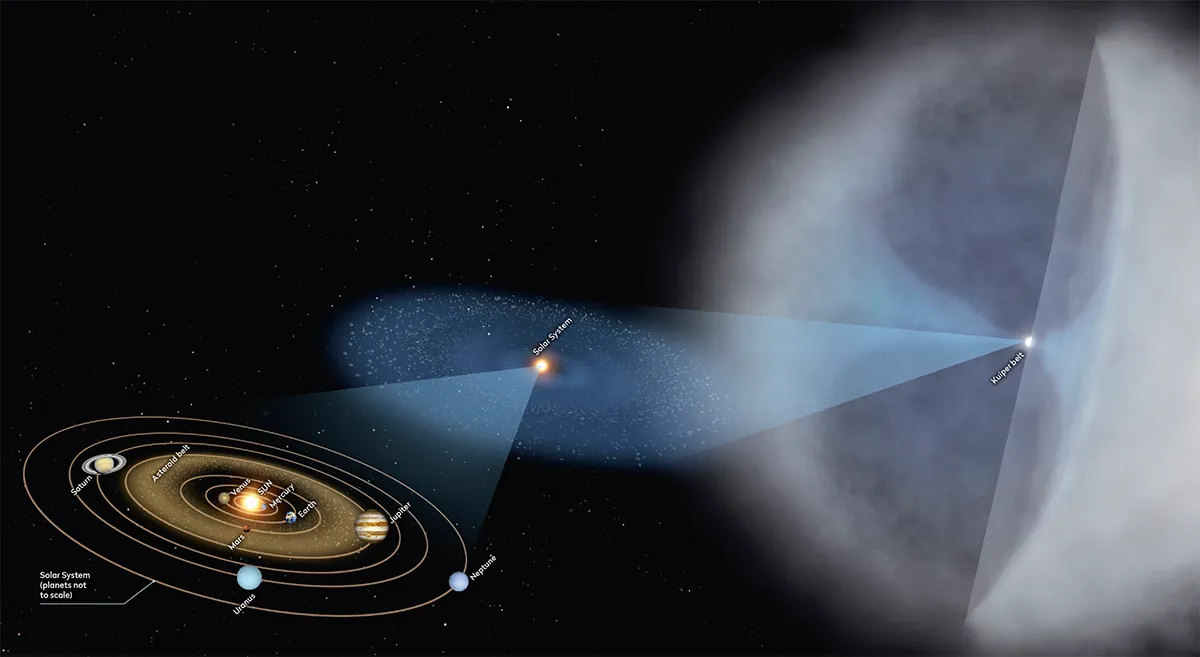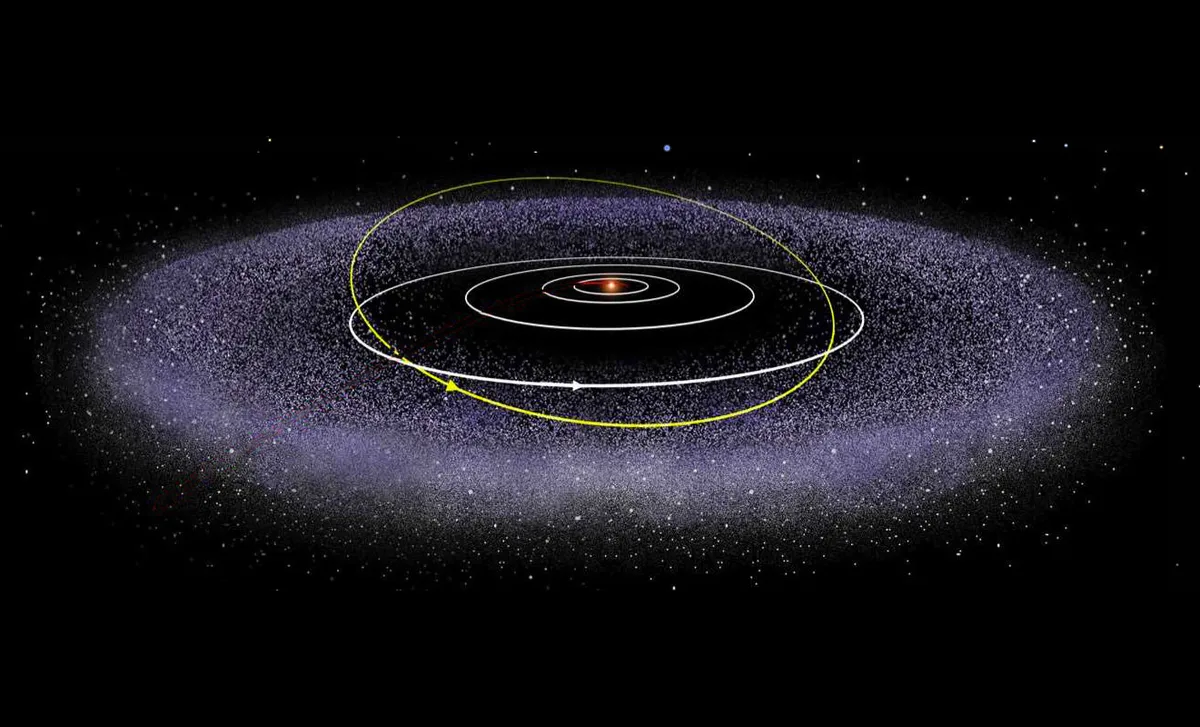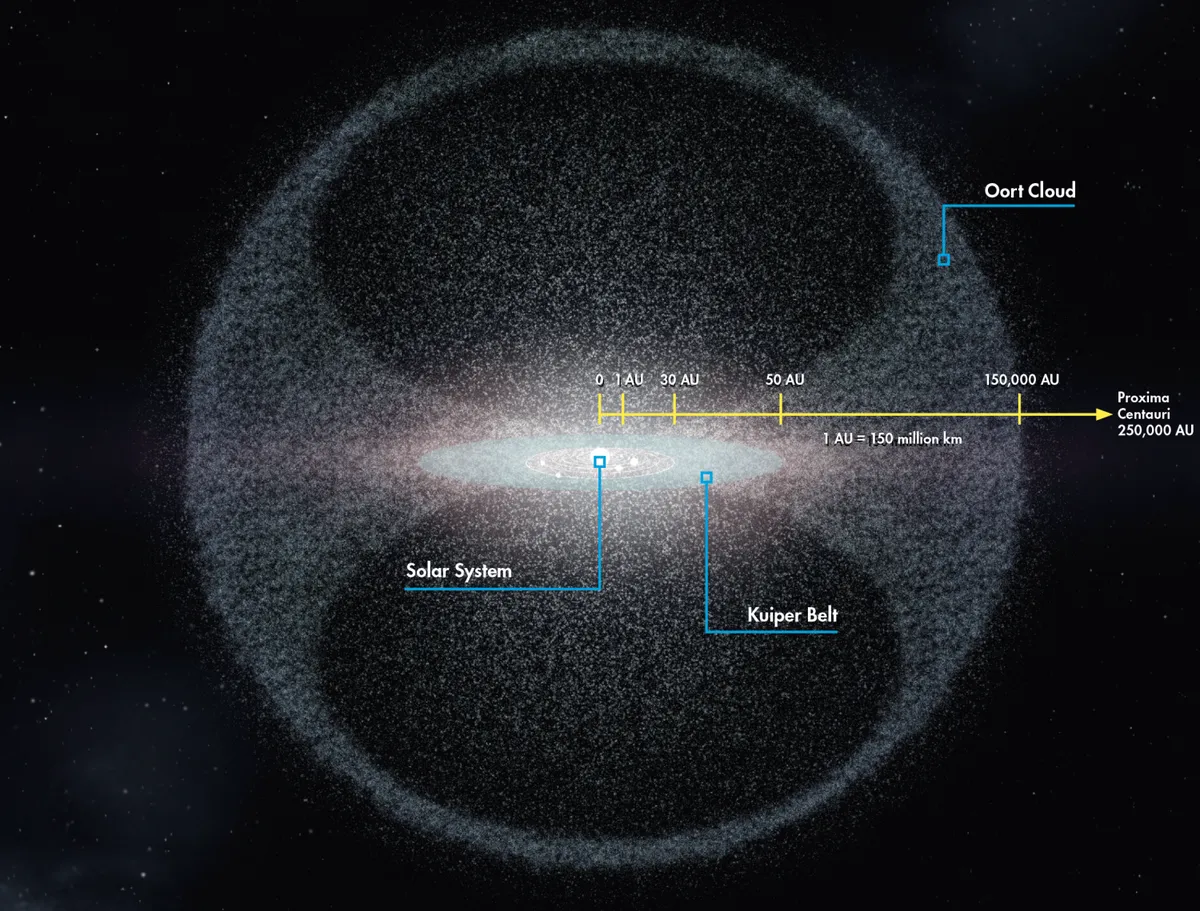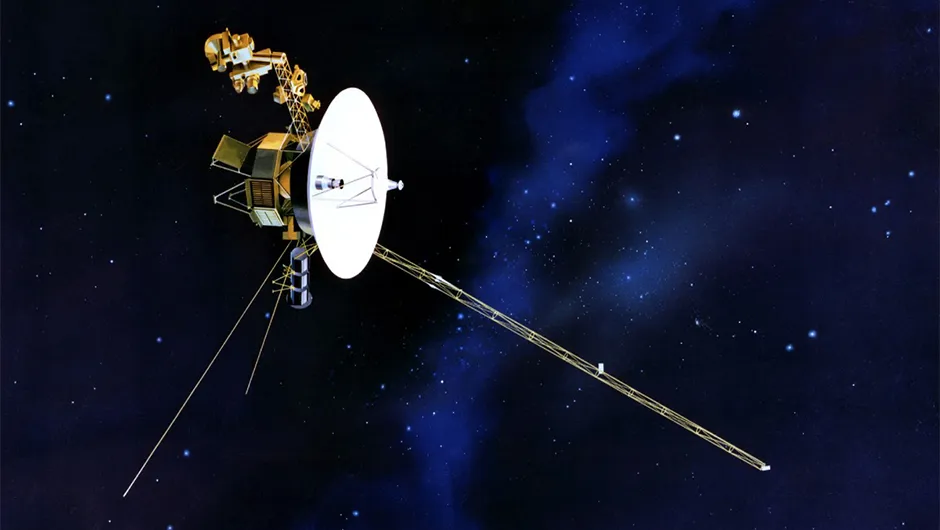Have you ever wondered where the edge of the Solar System is, and what's out there?
Beyond the Solar System lie cold, dark and vast regions that were once shrouded in mystery.
It is here that we have discovered various worlds, objects left over from the early days of the Solar System, a barrier that shelters us from harmful interstellar particles and a giant cloud filled with icy objects.

Right now, NASA’s Voyagers 1 and 2, and the New Horizons spacecraft are travelling into these uncharted territories, giving us a glimpse into the realms beyond our cosmic neighbourhood.
Here we take a look at the regions found at the edge of our Solar System.
Kuiper Belt

The Kuiper Belt is a huge ring-shaped region beyond the orbit of Neptune.
The main belt spans from 30 to 50 AU, with a more sparse, scattered disc stretching out to 1,000 AU.
It’s made up of dwarf planets, comets and bits of rock and ice, and is like the asteroid belt but 20 to 100 times more massive.
So far, more than 2,000 Kuiper Belt objects (KBOs) have been catalogued, but this number may just scratch the surface as it’s estimated there are hundreds of thousands of larger objects that are at least 100km in diameter or larger.

Many KBOs have moons or much smaller bodies orbiting them. Pluto, Eris, Haumea and Quaoar are all KBOs that have their own moons.
NASA’s New Horizons was the first spacecraft to visit an object in the Kuiper belt at the edge of the Solar System when it flew by Pluto and its moons in 2015, before going on to fly by a second KBO, Arrokoth, in 2019, located 1.6 billion kilometres beyond Pluto.
Oort Cloud

As we travel further out to the edge of the Solar System beyond Pluto, we come to the Oort cloud.
This is theorised to be a giant bubble that surrounds the Sun, planets and Kuiper belt, and is made up of billions, if not trillions, of bodies ranging from comet-like objects to potential dwarf planets.
It’s named after Dutch astronomer Jan Oort, who proposed the existence of the cloud to explain the origin of long-distance comets that travel in from all directions instead of along the same orbital plane as the planets.
Notable objects thought to have travelled from the Oort cloud into the Solar System include comet Hale–Bopp, which passed within 197 million kilometres of Earth and was visible to the naked eye in 1996 and 1997.
And Halley’s Comet, which travels backwards around the Sun every 76 years and was last seen in our skies in 1986.
The Oort cloud is incredibly far away. According to NASA, its inner edge is located between 2,000 and 5,000 AU from the Sun (1 AU being about 150 million kilometres), while its outer edge is possibly between 10,000 and 100,000 AU, nearly half the distance between the Sun and the closest star to our own, Proxima Centauri.
Heliosphere

The heliosphere is a giant bubble-like region that surrounds the Solar System as it moves through space.
It’s formed by a constant flow of charged particles sent out by the Sun that spreads out to just beyond the Kuiper belt, before being obstructed by the interstellar medium, creating a giant bubble around the Sun and planets that acts as a protective shield against cosmic radiation.
The Sun's influence is truly felt everywhere. There is even evidence that the Sun could be responsible for stripping away Neptune's clouds.
The heliosphere has several different features.
The termination shock is where the solar wind slows down and begins to interact with the interstellar medium around 75 to 90 AU from the Sun.
The heliosheath is a region where the solar winds travel slower and compress to become hot and dense.

Finally, there is the heliopause, the outer edge of the heliosphere, where the solar wind meets the interstellar medium.
NASA’s Voyagers 1 and 2 are the first human-made spacecraft to cross the heliopause – when they were around 90 AU from Earth – and enter interstellar space (in 2012 and 2018, respectively).
However, it will take the twin spacecraft about 300 years to reach the Oort cloud and they won’t exit its outer edge for another 30,000 years.
This article appeared in the April 2024 issue of BBC Sky at Night Magazine

